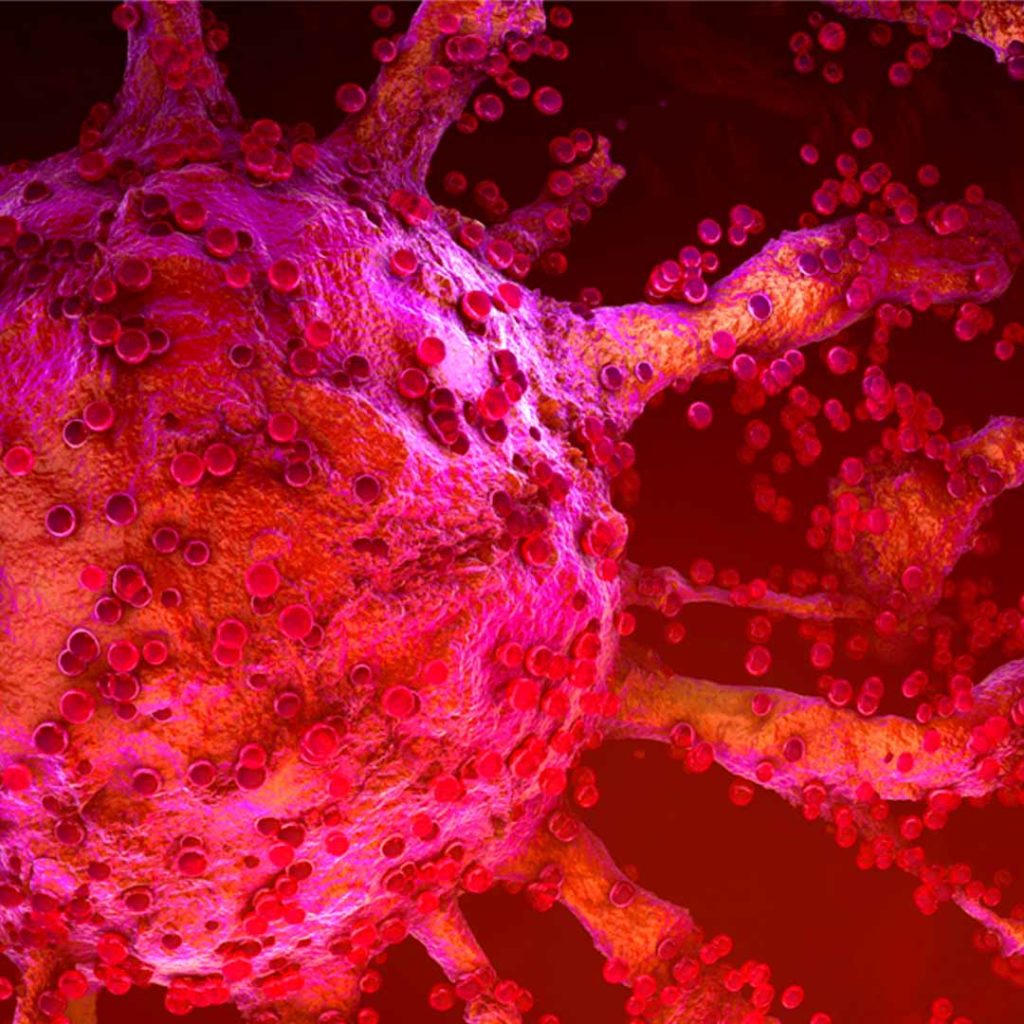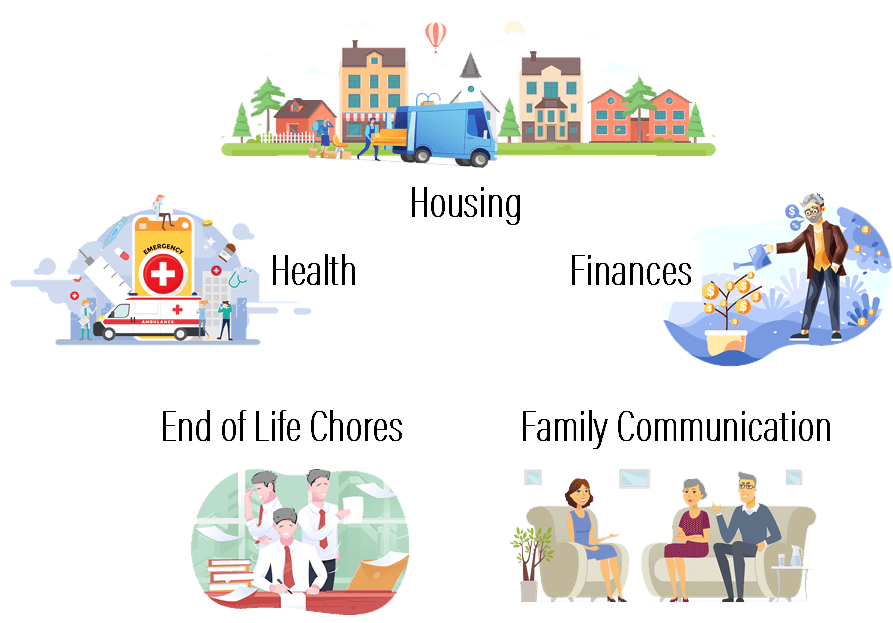What Caregivers Should Know About Cancer
Click here to see what's on this page.
Caregivers caring for seniors with cancer should know the basics. For example, cancer is the umbrella name given to a variety of related diseases. There are many types of cancer. In senior women, for example, breast, lung and bowel cancers are the most common. In senior men, prostate, lung and colorectal are the most common cancers. Common to all cancers is that the body’s cells begin to divide without stopping and spread into surrounding tissues.
The body is made up of trillions of cells. Cancer is a disease of the cells and can start almost anywhere in the human body, which is made up of trillions of cells. Normal human cells grow and divide to form new cells as the body needs them. When these cells grow old or become damaged, they die and are replaced by new cells.

Cancer impedes this process. Cancerous cells are essentially old or damaged cells that are surviving when they should die. They replicate and form new cells when they are not needed. However, cancerous cells can divide without stopping. They form growths called tumors.
Solid tumors are masses of tissue. Other cancers like cancers of the blood, such as leukemias, generally do not form solid tumors, just cancerous cells.
Cancerous tumors are malignant (i.e., infectious and deleterious). They can spread or invade nearby tissues. As these tumors grow, some cancer cells can break off. These rogue cancerous cells can travel to distant places in the body through the blood or lymph system. They can end up all over the body and form new tumors far from the original tumor. Learn more here.
How Cancer Impacts Seniors
The older we get, the greater the probability of developing cancer. About 65% of all cancers impact people 55 years and older. The most common cancers are breast, colon/rectum, prostate, lung, pancreas, and bladder.
Seniors addressing cancer also face higher incidences of depression, distress, and anxiety than younger populations. Cancer also tends to accelerate the rate of aging and decrease levels of physical activity. Also, seniors tend to have fewer surgical interventions than younger populations.
Added up, cancer dramatically impacts the life of a senior.
Cancer Treatment Options
Primary Treatment
The goal of primary treatment is to kill the cancer or remove the cancer from your body. Therefore, any cancer treatment can be used as a primary treatment. However, surgery is the most common primary treatment for most common types of cancer. If your cancer is known to respond well to radiation therapy or chemotherapy, you may receive that therapy as your primary treatment.
Post-Primary (Adjuvant) Treatment:
After primary treatment, there is often residual cancer. Adjuvant therapy, for example, is aimed at killing these remaining cancer cells. This reduces the chance that the cancer will recur. Any cancer therapy can be used as adjuvant therapy. The most common are radiation therapy, chemotherapy, and hormone therapy. There is a variation on adjuvant treatments that occurs before primary treatment called neoadjuvant therapy. Neoadjuvant treatment occurs before the primary treatment to enhance the effectiveness of the primary treatment.
Palliative Treatment For Cancer
The palliative care specialty is a 21st-century phenomenon. It uses a team approach and focuses on providing relief from the symptoms and stress of a serious illness. The goal is to improve the life for both the patient and their family. The team is made up of palliative care specialist doctors and nurses, and includes others such as chaplains, nutritionists, and social workers. It’s also often offered to seniors dealing with serious chronic and possibly terminal illnesses. The multidisciplinary nature of the team facilitates the ability to address the social, emotional, and practical support needs of the patient and patient’s family. For example, the team works with the patient’s other doctors to ensure the patient’s goals are fully addressed. In other words, palliative care is additive to a patient’s existing care. No one is giving up on life-sustaining medical interventions.
Palliative Care Services
> Time for the palliative care team to facilitate meetings and counseling to address serious illness related issues (e.g., quality of life, treatment goals, etc.).
Palliative treatment can also be added to cancer treatment. Think of it as another resource to address your disease and the repercussions of that disease.
Hospice Care
Like palliative care, hospice care provides comprehensive comfort care and support for the family. The difference is that hospice care does not make efforts to cure the patient’s illness. In fact, stopping life-sustaining and disease-fighting treatments is a requirement of hospice. Hospice is also provided for terminally ill patients or the advanced aged whose doctor believes he or she has six (6) months or less to live. In other words, the patient wants to allow age or illness to run its natural course.
CarePlanIt’s Approach
CarePlanIt classifies every issue into one of five key areas: health, housing, finances, end of life chores & family communication. Once done, the CarePlanIt framework allows you to create an optimized process of addressing the challenge. You minimize your family’s time and costs while maximizing your chance at reaching an ideal solution. Although all five categories work together, it’s important to make an initial categorization.

For example, cancer is a “Health” issue. The disease and treatment are scary and demanding on the patient, family, and caregivers. Generally, for Health-related issues, CarePlanIt helps you optimize your finances, identify how your disease impacts your needs, and optimize your family’s participation.
Also see or Sections on Health, Finances and Family Communication.
In short, someone with terminal cancer is likely to require continuous supervision. This can be provided by:
Quick Ideas From CarePlanIt
Managing the costs of supervising and caring for a cancer patient is often the family’s major challenge. Here’s what many families do:
For detailed techniques on how to address this disease within your family, See our Family Section